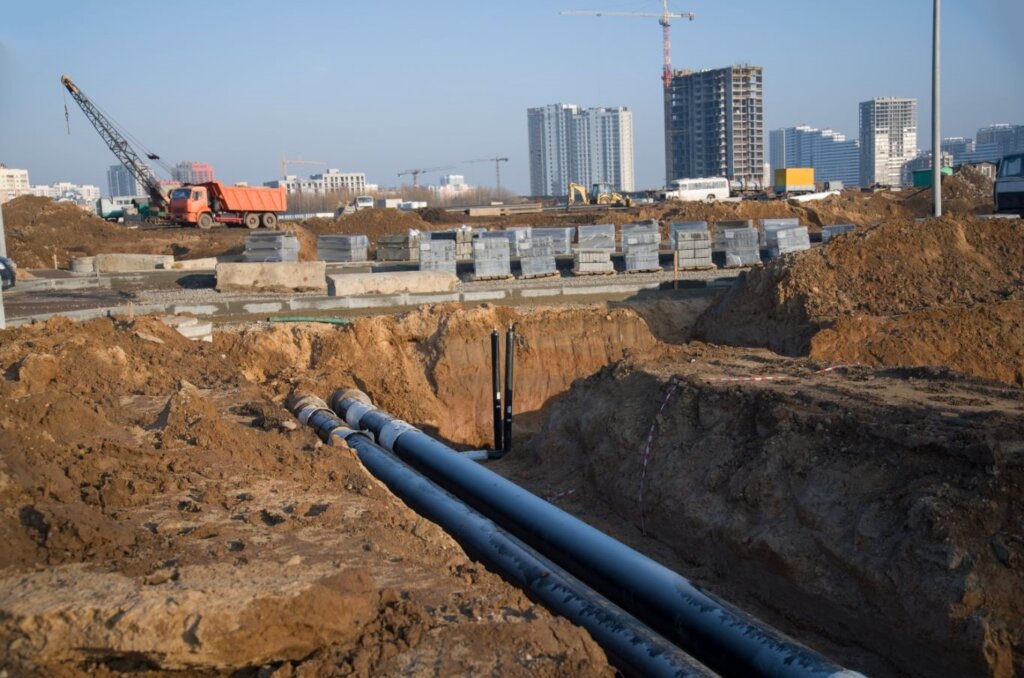As we go about our daily lives, we often take for granted the systems that provide us with essential services like clean water and effective sewage disposal. However, it is important to understand the distinction between sewer and water treatment systems, as they play a crucial role in maintaining public health and the environment. In this comprehensive guide, we will explore the difference between sewer and water, the importance of safe drinking water supply, current approaches to domestic and industrial sewage disposal, evaluating the safety of sewage disposal systems in your area, common issues and challenges, and steps you can take to ensure a safe drinking water supply and improve sewage disposal systems. Let’s dive in.
Understanding the Difference Between Sewer and Water
To start, let’s clarify the distinction between sewer and water. Water refers to the supply of clean, potable water that is safe for human consumption. It is sourced from natural sources such as rivers, lakes, and underground aquifers, and goes through a rigorous treatment process to remove impurities and ensure it meets the required standards for drinking water. On the other hand, sewer refers to the system that collects and transports waste and wastewater from homes, businesses, and industries to treatment facilities. This wastewater includes everything from household sewage to industrial effluents, and it undergoes treatment to remove contaminants before it is safely discharged back into the environment.
The Importance of Safe Drinking Water Supply
Safe drinking water supply is crucial for maintaining public health and preventing the spread of waterborne diseases. Access to clean water is a basic human right, and it is the responsibility of governments and water treatment authorities to ensure that the water supplied to households and communities is safe for consumption. Contaminated water can lead to a range of health issues, including gastrointestinal problems, bacterial and viral infections, and even long-term effects on development and cognitive function, especially in children. Therefore, it is essential to have robust water treatment systems in place to provide clean and safe drinking water to the population.
Current Approaches to Domestic Sewage Disposal
Domestic sewage disposal refers to the management of wastewater generated from households. In many developed countries, the most common approach is to connect residential properties to a centralized sewer system. These systems collect wastewater from multiple sources and transport it to treatment plants, where it undergoes various treatment processes to remove contaminants. The treated water is then discharged into nearby water bodies or reused for non-potable purposes such as irrigation. However, in areas where a centralized sewer system is not available or feasible, individual properties may rely on septic tanks or other decentralized systems for sewage disposal.
Current Approaches to Industrial Sewage Disposal
Industrial sewage disposal involves the management of wastewater generated by industrial processes. Industries produce a wide range of pollutants that can be harmful to the environment and human health if not properly treated. The current approaches to industrial sewage disposal vary depending on the nature of the industry and the pollutants involved. Some industries may have their own on-site wastewater treatment facilities, while others may discharge their effluents into a centralized sewer system. In certain cases, industries may be required to pre-treat their wastewater before it is discharged to ensure that it meets regulatory standards.
Evaluating the Safety of Sewage Disposal Systems in Your Area
It is essential to evaluate the safety of sewage disposal systems in your area to ensure that they are effectively removing contaminants and protecting the environment. One way to assess the safety is by checking the compliance of sewage treatment facilities with regulatory standards. These standards define the permissible levels of various pollutants in the effluents discharged into the environment. Additionally, monitoring the water quality of nearby water bodies can indicate whether the sewage disposal systems are adequately treating the wastewater. If you have concerns about the safety of sewage disposal systems in your area, you can reach out to the local environmental or health authorities for more information.
Common Issues and Challenges in Sewer and Water Treatment Systems
Sewer and water treatment systems face several common issues and challenges. Aging infrastructure is a significant concern in many areas, as outdated systems may be prone to leaks, blockages, and failures. Inadequate funding for system maintenance and upgrades can also hinder the effectiveness of these systems. Additionally, the increasing population and urbanization put pressure on existing infrastructure, leading to overburdened systems and potential health risks. Climate change and extreme weather events further exacerbate these challenges, as they can disrupt water supply and increase the vulnerability of treatment facilities. Addressing these issues requires long-term planning, investment, and collaboration between stakeholders.
Steps You Can Take to Ensure Safe Drinking Water Supply
While the responsibility for providing safe drinking water lies with the authorities, there are steps you can take at an individual level to ensure the safety of your water supply. Firstly, it is advisable to install a water filtration system in your home to further treat the water coming from the tap. This can help remove any residual contaminants and provide an additional layer of protection. Regularly maintaining and cleaning your household plumbing fixtures can also prevent the accumulation of bacteria and other harmful substances. Finally, staying informed about the quality of your local water supply and actively participating in community initiatives for water safety can make a significant difference in ensuring a safe drinking water supply for all.
Steps You Can Take to Improve Sewage Disposal Systems in Your Area
Improving sewage disposal systems requires collective efforts from the community, local authorities, and relevant stakeholders. One way to contribute is by practicing water conservation and reducing the amount of wastewater generated. Simple actions like fixing leaks, using water-efficient appliances, and being mindful of water usage can have a positive impact. Another step is to support initiatives that promote the use of sustainable and innovative sewage treatment technologies. These technologies can improve the efficiency and effectiveness of the treatment process while minimizing the environmental impact. Lastly, advocating for increased funding and investment in upgrading and maintaining sewage disposal infrastructure can help address the challenges faced by existing systems.
Conclusion: Taking Action for a Healthier Environment
Understanding the distinction between sewer and water treatment systems is crucial for appreciating the efforts required to ensure safe drinking water supply and effective sewage disposal. By evaluating the safety of sewage disposal systems, addressing common issues and challenges, and taking proactive steps at an individual and community level, we can contribute to a healthier environment and better water management. Remember, safe drinking water is not just a privilege but a fundamental right for everyone. Let us all work together to protect and preserve this invaluable resource for future generations.





